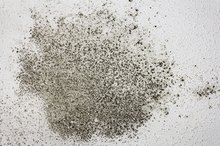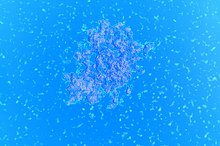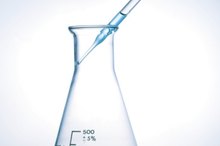Advantages & Disadvantages for Disinfectants
Disinfectants are important chemicals used for a variety of purposes 1. Within homes, disinfectants are used to kill microorganisms which can grow in places such as the kitchen or the bathroom. Disinfectants are widely used within the medical establishment, hospitals, health care centers and doctors' offices for purposes of killing different types of germs which may cause all kinds of diseases. As important as they may be, they have both advantages and disadvantages.
Advantages
One of the most important advantages offered by disinfectants is for the control of diseases. Disinfectants can kill germs and microorganisms which may not be seen with the naked eye. For instance, Phenolics types of disinfectants are very good for killing bacteria. They are considered as general purpose disinfectants, and can kill organic matter and other organisms including mycobacterium. Examples of phenolics include Benzyl-4 chlorophenol, amylphenol and phenylphenol.
- One of the most important advantages offered by disinfectants is for the control of diseases.
- For instance, Phenolics types of disinfectants are very good for killing bacteria.
Inexpensive
Ingredients in Hand Sanitizer
Learn More
Disinfectants are largely inexpensive. They are widely available. Some of the cheapest kinds of disinfectants include halogens. Halogens are also very effective in killing and controlling viruses. They are also used for equipment disinfecting; particularly medical equipments contaminated with blood which are soiled with HIV or Hepatitis and other diseases. Bleach with its bleaching potential is used in treating clothes against bacterial and germ contamination. Examples of halogen disinfectants are hypochlorite and ordinary bleach.
- Disinfectants are largely inexpensive.
- Examples of halogen disinfectants are hypochlorite and ordinary bleach.
Treating Skin Wounds
Alcohol is another group of disinfectants used in treating skin and wounds against bacterial infections. They are used to clean the surfaces of wounds on the body; they are also used along with water to maximize their effectiveness. Some common examples of alcohol are isopropyl alcohol, and ethyl alcohol. Isopropanol is another example of alcohol, used for skin disinfecting.
- Alcohol is another group of disinfectants used in treating skin and wounds against bacterial infections.
Disadvantages
How Does Hand Sanitizer Kill Bacteria?
Learn More
Disinfectants are hazardous waste. They contain halogenated compounds. Most disinfectants contain in excess of environmental safety level of 0.01 percent of the halogenated compounds. This makes it hard for disinfectants to be disposed as ordinary waste. In fact, some disinfectants are considered as not only hazardous, but also toxic. Amylphenol is an example of a toxic and hazardous disinfectant.
- Disinfectants are hazardous waste.
- Most disinfectants contain in excess of environmental safety level of 0.01 percent of the halogenated compounds.
Irritants
Some disinfectants are irritants and can be harmful to humans, particularly in strong concentrations. Some disinfectants are used to kill crop bacteria and other microorganisms. Some of these disinfectants are capable of causing danger to humans. There is an ongoing controversy over using some disinfectants on crops. Glutaraldehyde is used to kill microorganisms on crops and vegetables. Stronger concentrations could be harmful to humans.
- Some disinfectants are irritants and can be harmful to humans, particularly in strong concentrations.
Related Articles
References
Writer Bio
This article was written by the CareerTrend team, copy edited and fact checked through a multi-point auditing system, in efforts to ensure our readers only receive the best information. To submit your questions or ideas, or to simply learn more about CareerTrend, contact us [here](http://careertrend.com/about-us).









